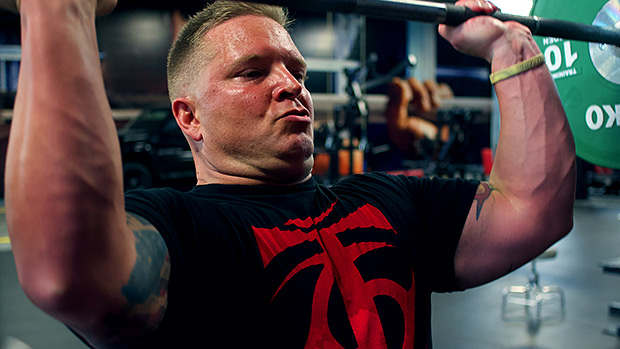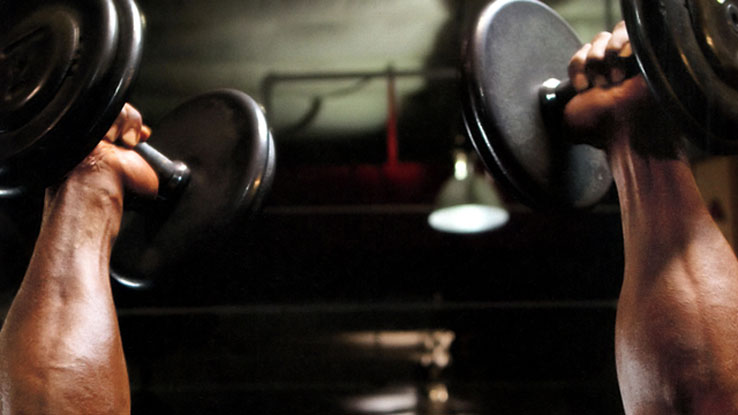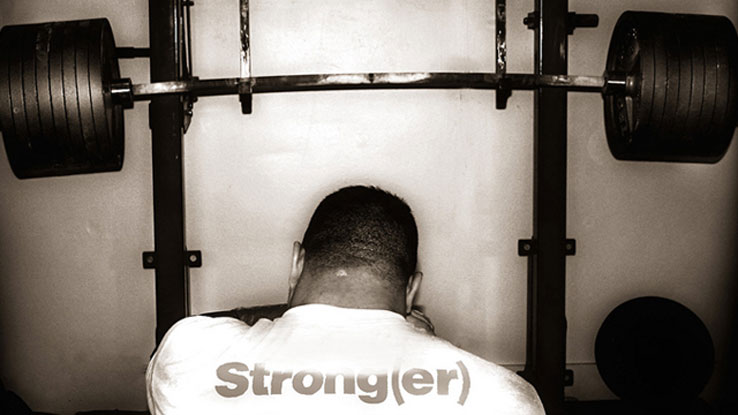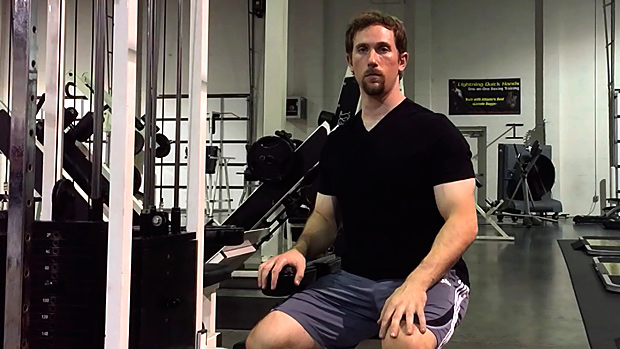Comfortably holding a heavy weight over your head takes some serious shoulder stability and a good amount of mobility through your thoracic spine.
You'll need stable and mobile shoulders to nail a good overhead lockout position with everything from barbell pressing to the Olympic lifts and even handstands.
If you're struggling overhead, try these exercises to strengthen your shoulders and improve your overhead game.
Do you have the prerequisite mobility and motor control to achieve a good overhead position? This will let you know.
The movement requires you to be mobile and strong through your thoracic spine (and stable through your lumbar spine) to get your body up against the wall. It's great for the upper body because it dynamically challenges you to stabilize your shoulders as you walk yourself towards the wall.
It also forces you to learn how to properly brace your core by pulling your ribcage down so you don't go into excessive lumbar extension during an overhead lift.
How to Do It
- Begin with two hands on the ground and one leg against the wall.
- Walk your hands backward as you bring your other leg against the wall.
- Stabilize your lower back by engaging your core and pulling your ribcage down.
- Walk yourself backward until your nose touches the wall and you're in a vertical body position.
- Keep your arms straight and press yourself away from the floor so that you achieve protraction and elevation through the shoulder blades.
- Hold until you start to lose protraction through the shoulders.
Wow, that's a long-ass name for an exercise, but it does the job! Pressing and stabilizing heavy weights overhead requires a strong rotator cuff as well as an efficient bar path.
This exercise forces your rotator cuff to stabilize your shoulder for the entire press and will teach you how to press weight up and back. It has the added benefit of firing up your nervous system and improving your grip strength since it requires a strong grip to keep the kettlebell upright. Placing yourself in the L-sit position requires more core activation and will keep you from arching your back to complete your reps.
How to Do It
- Begin seated with your legs straight in front of you. Hold two kettlebells upside down with your elbows bent and wrists straight.
- Pull your ribcage down to brace your core and press one kettlebell up and back.
- Finish the press with your biceps next to your ear and pause at the top to make sure the kettlebell is stabilized overhead.
- Slowly lower the kettlebell back down and repeat on the opposite side.
This is a dynamic lift and requires almost all the muscles in your body to work together to stabilize the kettlebell overhead.
This movement is similar to the bottoms-up kettlebell press in how it challenges shoulder stabilization, but it requires more timing and arguably more athleticism since you have to "catch" the weight at the top.
Although the movement of the kettlebell will have a significantly bigger "arc" than a barbell, this can be a great tool to get better at the Olympic lifts since it involves hinging the hips and catching the weight overhead in one efficient movement.
Your ribcage should be pulled down and you should finish the lift with your biceps next to your ear, pausing for 2-3 seconds before lowering.
How to Do It
- Begin with your feet slightly wider than hip width. Maintain a strong flat back as you hinge your hips back, bringing the kettlebell between your legs.
- Explosively drive your hips forward, swinging the 'bell upward.
- Catch the kettlebell by the handle with your arm straight and biceps next to your ear. Your shoulder should be in a neutral position when you catch the 'bell.
- Maintain a neutral spine as you press up on the kettlebell, maintaining tension throughout the entire body.
- Hold the kettlebell by the handle at a dead stop for 2-3 seconds for the rep to count.





